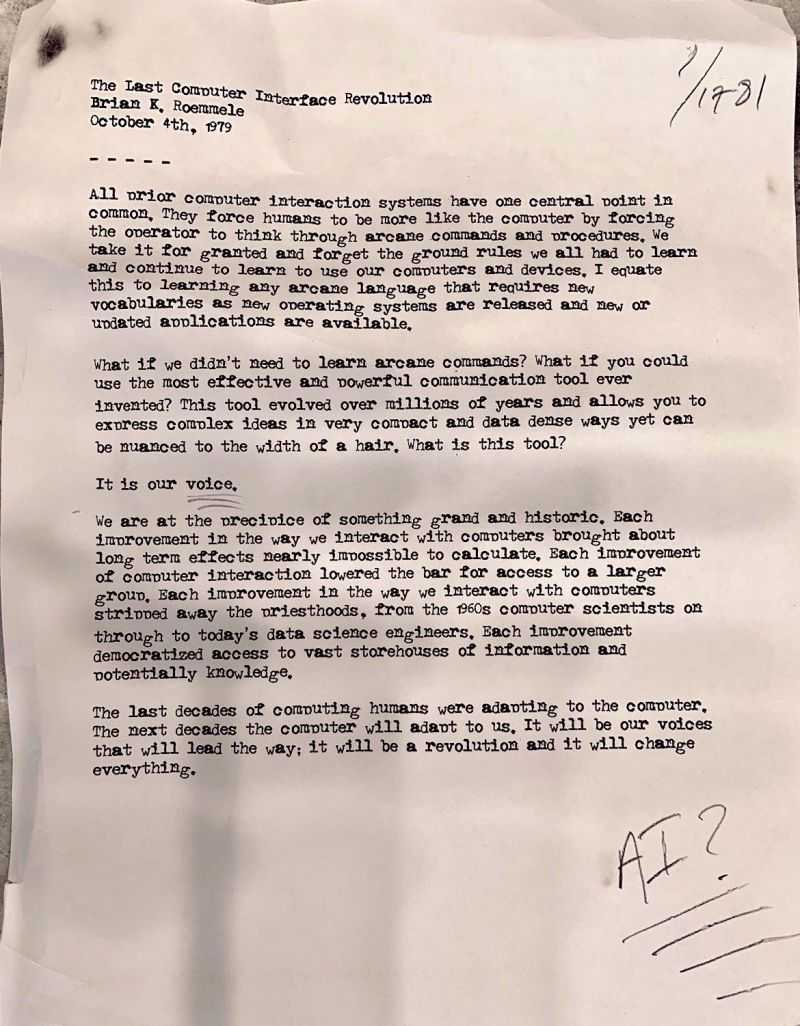In 1979, technologist and writer Brian Roemmele predicted that all software would eventually collapse into a single interface, what he called "The Last Interface".
Over four decades later, Roemmele's prediction is becoming a reality. Voice and text input are rapidly becoming the primary means of interacting with technology, making many of the current components of software applications unnecessary.
If you've used GPT-4 in recent weeks, you've felt how this is becoming a reality. Many apps will soon be consolidated into a chat screen or voice command interface, rendering hardware more and more inconsequential.
So, what does this mean for the future of your app? Take financial applications, for example. How much "app" do we need once they leverage something like ChatGPT? A voice command like "Show me my accounts" still warrants a display of account names and amounts, likely in the familiar design we are used to. However, a command like "Pay Sally $50 for house-sitting" doesn't require any interface at all.
Similarly, any type of search, whether for a specific transaction or a statement or tax record, can happen with just voice and text input, and will be delightfully easier than it is now. Even more complex actions, like buying stocks, can be accomplished with just voice and text input, with maybe a chart or two to aid in trend analysis.
Generally speaking, most application interfaces will become a fraction of what they were before, and some may disappear altogether. As we move closer to the Last Interface, our team is starting to think about how apps will adapt to this new paradigm.
This post was originally shared on our CEO Sandeep Sood's LinkedIn profile. Join the conversation here.
